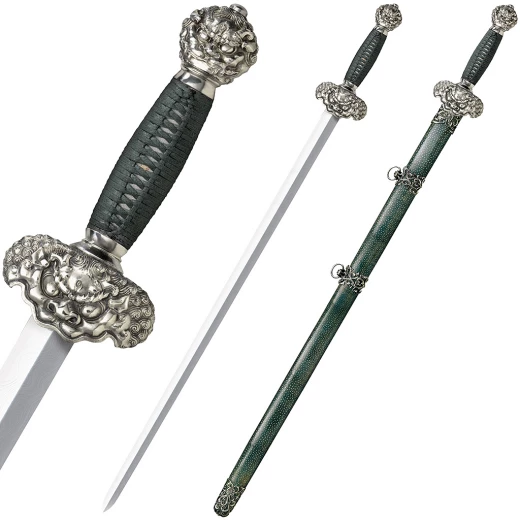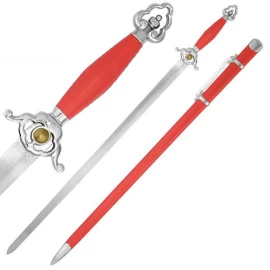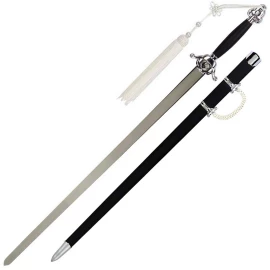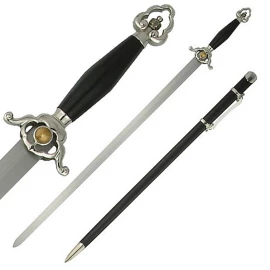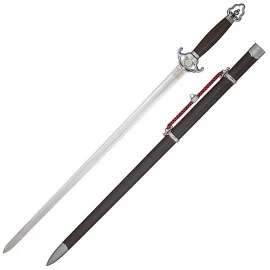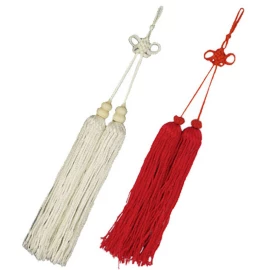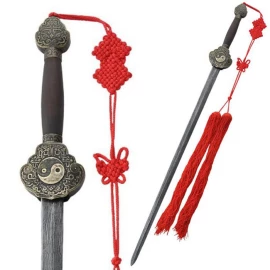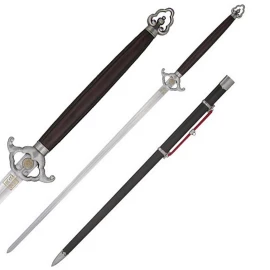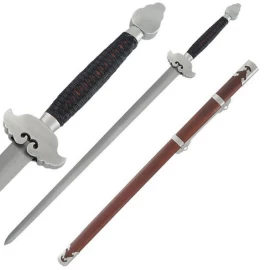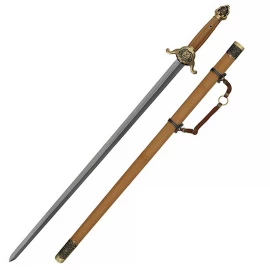Scholar's Sword Jade Lion Gim
The concept of the guardian lion emerged in China over 1800 years ago during the Han Dynasty. The lion, fierce, courageous, loyal and swift, was the perfect symbol to guard home and hearth. Both decorative and symbolic, it was common to see elegant sculptures of these lions guarding the homes of the wealthy and aristocratic or even the gates of the Imperial Palace and the tombs of the Chinese emperors. Further product information ...
1 051,00 €
868,60 € excl. VAT
Show alternatives
Discontinued and cannot be ordered anymore
Buy for 82,12 € more and get free shipping.
0,00 € / 82,12 €
SKU: 88RLG
Period:
Recommended offer
Scholar's Sword Jade Lion Gim
- Material: Damascus steel
- Overall length: approx. 92cm
- Blade length: approx. 76.2cm
- Blade thickness: approx. 6.4mm
- Handle: approx. 15.8cm long, jade green cord wrap, nickel-silver guard & pommel
- Weight: approx. 900 g
- Incl. polished Samé-wrapped rosewood scabbard w/ nickel-silver fittings
- Cold Steel® Product No.: 88RLG
The Cold Steel® Jade Lion series has proven to be incredibly popular with Chinese Martial Artists and blade collectors alike. Hand-forged and expertly tempered from high-quality Damascus steel, their subtly patterned blades are as sharp as they are beautiful. The heavy guard and pommel are cast from nickel-silver and adorned with watchful Chinese lions, providing a compelling contrast to the elegant jade green color of the cord-wrapped handles and rosewood scabbards that are covered in Samé (ray skin), dyed to match the handles.
The Jade Lion Gim is a civilian self-defense Wen Jian (Scholar's Sword), with a little more panache than the practical versions (like Cold Steel®'s Gim Sword) that were made for the battlefield. In Cold Steel®'s tests, it severed and pierced 10cm bamboo poles with a single cut or thrust.
Damascus Steel
The terms Damascus steel, damascene or pattern welded designate a compound steel forged out of two or more different types of steel. It is named after its birthplace, the Syrian city of Damascus, a former stronghold of the patterned steel production. As a common practice, a harder high carbon steel and a milder low carbon steel are repeatedly forge welded and folded together. The high carbon steel ensures a higher hardness, a better temperability and longer lasting edge retention, whereas the milder steel confers greater blade flexibility and tensile strength. This procedure, which arose in a time where steel qualities were often low and inconsistent, enables to combine the positive attributes of the various steel grades. Besides, the different shadings generated by the varying carbon content of the alternating layers engender strikingly beautiful patterns. Undoubtedly, these unusual patterns partly explain why inherent magical properties were attributed to the Damascus steel blades of the Middle Ages.
We are here for you!


